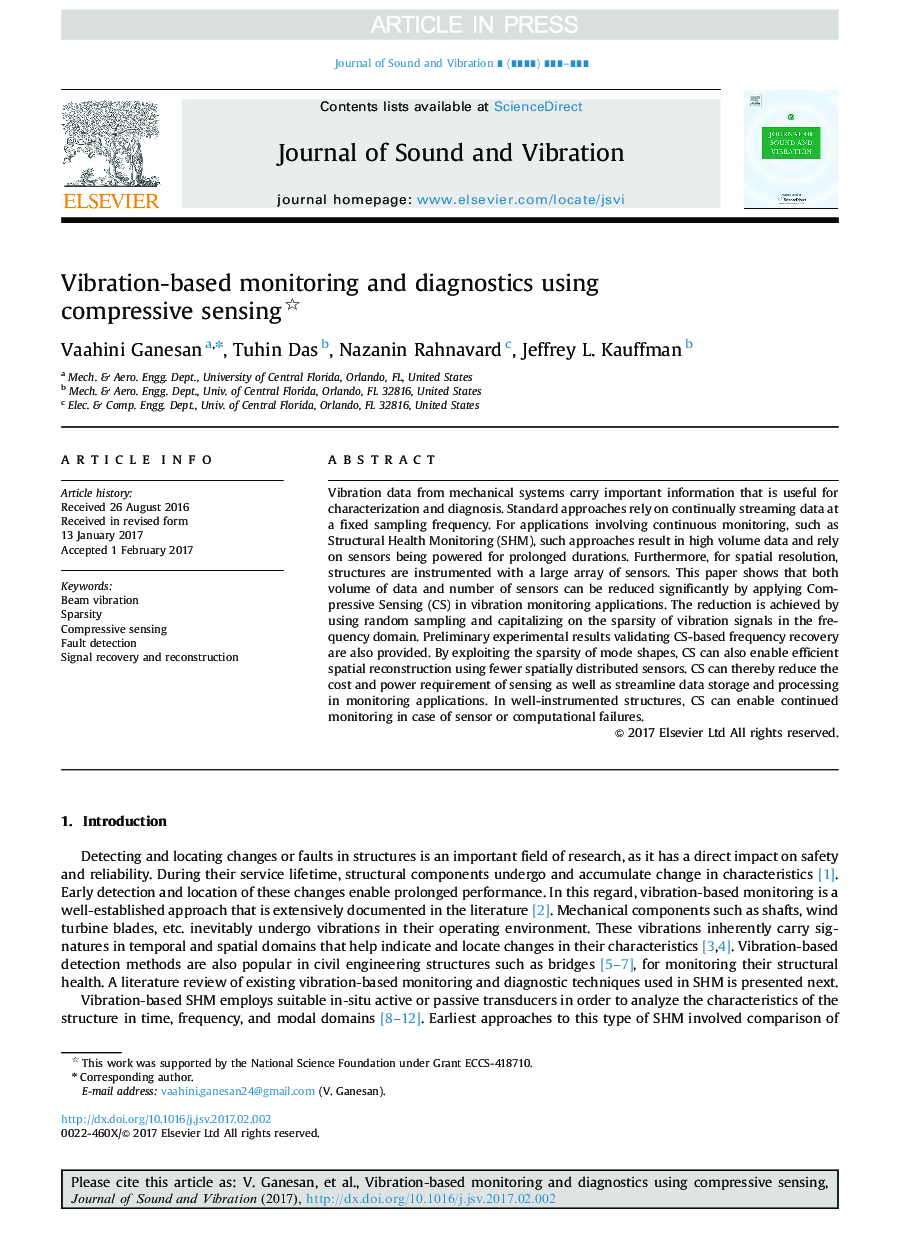| Article ID | Journal | Published Year | Pages | File Type |
|---|---|---|---|---|
| 4924329 | Journal of Sound and Vibration | 2017 | 19 Pages |
Abstract
Vibration data from mechanical systems carry important information that is useful for characterization and diagnosis. Standard approaches rely on continually streaming data at a fixed sampling frequency. For applications involving continuous monitoring, such as Structural Health Monitoring (SHM), such approaches result in high volume data and rely on sensors being powered for prolonged durations. Furthermore, for spatial resolution, structures are instrumented with a large array of sensors. This paper shows that both volume of data and number of sensors can be reduced significantly by applying Compressive Sensing (CS) in vibration monitoring applications. The reduction is achieved by using random sampling and capitalizing on the sparsity of vibration signals in the frequency domain. Preliminary experimental results validating CS-based frequency recovery are also provided. By exploiting the sparsity of mode shapes, CS can also enable efficient spatial reconstruction using fewer spatially distributed sensors. CS can thereby reduce the cost and power requirement of sensing as well as streamline data storage and processing in monitoring applications. In well-instrumented structures, CS can enable continued monitoring in case of sensor or computational failures.
Related Topics
Physical Sciences and Engineering
Engineering
Civil and Structural Engineering
Authors
Vaahini Ganesan, Tuhin Das, Nazanin Rahnavard, Jeffrey L. Kauffman,
